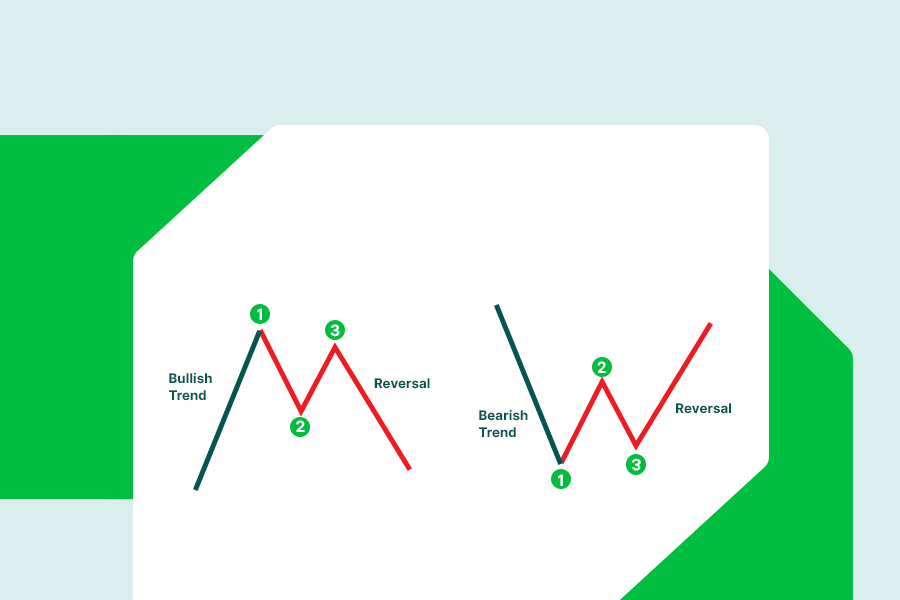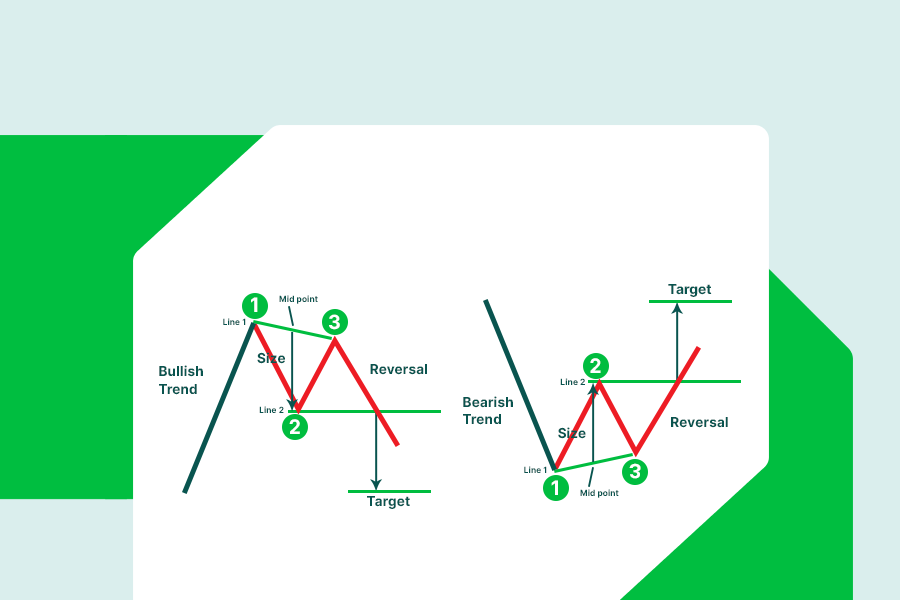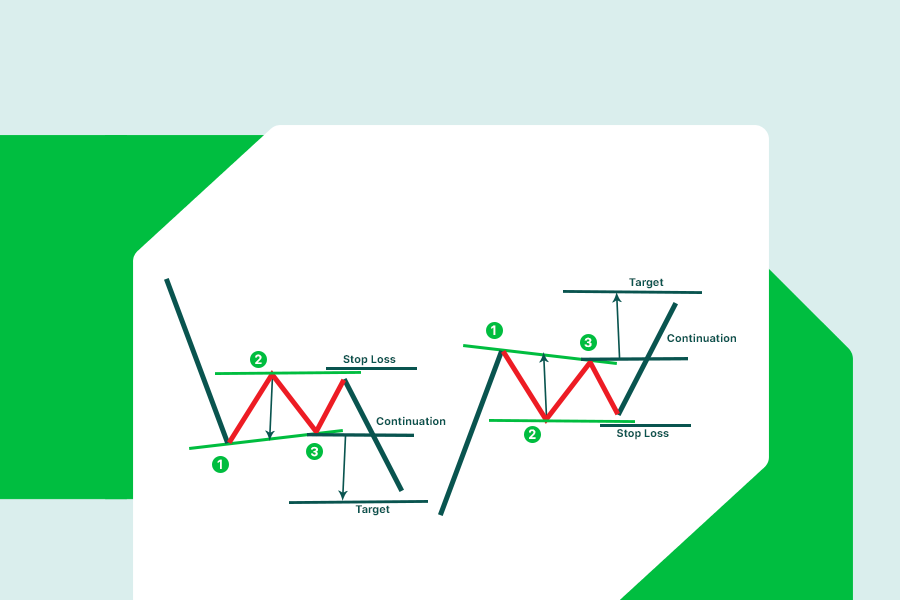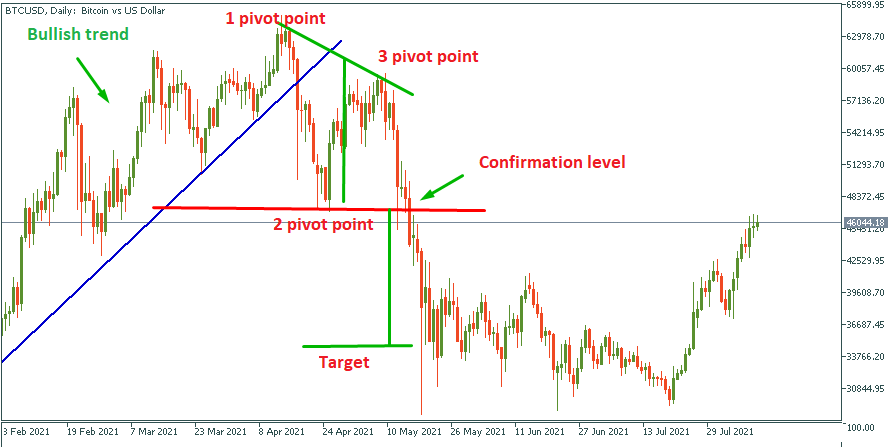Trading Accounts
Trading Conditions
Financials
CFD Trading instruments

Don’t waste your time – keep track of how NFP affects the US dollar!
The ASIC policy prohibits us from providing services to clients in your region. Are you already registered with FBS and want to continue working in your Personal area?
Personal area123 reversal setup is a basic on-chart formation, that warns about upcoming trend reversal.
The 123-chart pattern is a three-wave formation, where every move reaches a pivot point. This is where the name of the pattern comes from, the 1-2-3 pivot points.
Here is how the pattern looks like:

123 pattern works in both directions. In the first case, a bullish trend turns into a bearish one. And the second picture presents the opposite, a bearish trend turns into a bullish one.
The pattern appears after three price movements, which form three pivot points and a confirmation level.
Pivot point 1.
This is a turning point that the price formed during the trend. If a price breaks the previous trendline after it formed pivot point 1, the pattern will be more reliable.
Pivot point 2.
The next turning point is very likely to form outside of the previous trendline or channel. This is a good indication that the trend might be ready to end and reverse.
Pivot point 3.
Pivot point 3 is crucial for 123 reversal chart patterns. The point must not exceed the pivot point 1 (in the worst case it might be on the same level) for the pattern to be valid.
Confirmation level
The confirmation level is our entry point in the market. It is located at the same level as pivot point 2. When price breaks through this level open the trade.

To set the target trader needs to connect 1 and 3 pivot points with a line. The size of your 123 pattern equals the vertical distance between Line 2 (which is a horizontal line at the level of 2 pivot point) and the midpoint of Line 1.

It is highly important to use stop loss when trading the 123 chart pattern. The stop loss should be set under pivot point 3 in the bullish trend reversal, and above in the bearish one. In the condition of high market volatility, the price might get pushed beyond the 2 pivot point for a while. That’s why it will be a good idea to set stop-loss slightly beyond the 3 pivot point, as this will prevent stop loss from being activated.

123 pattern also might work as a continuation pattern. In other words, it could give a signal that the trend is not going to reverse.
In this case, the price does not break the “confirmation level” at pivot point 2. On the contrary, it returns to the pivot point 3 level and breaks it through. This setup gives a signal that the trend will continue.
Stop-loss in continuation pattern formation
If you are trading the 123 pattern as a continuation formation, then your stop-loss order should go beyond Pivot Point 2.
The target of the “continuation 123 pattern” measures the same way as usual. The only exception is that in this case, you should take pivot point 3 as a starting one of your target.

If you would only know about 1-2-3 patter in May 2021. That would be the greatest short trade ever! Let’s look at the perfect example of this pattern!
Daily Bitcoin chart

After the Bitcoin chart has formed 1 pivot point the price dropped behind the trend line, where the 2 pivot point occurred. Then the price bounced back and the 3 pivot point and a potential stop loss level appeared. After the price broke the confirmation level it dropped and reached the pattern target.
Conclusion
123 pattern is a common pattern that usually appears at the beginning of many price reversals. Sometimes, it might give a signal about trend continuation as well. To get higher quality signals it is better to use the 123 pattern in a tandem with an oscillator (for example RSI). At the moments of RSI extremes, 123 pattern will provide the most accurate signals.